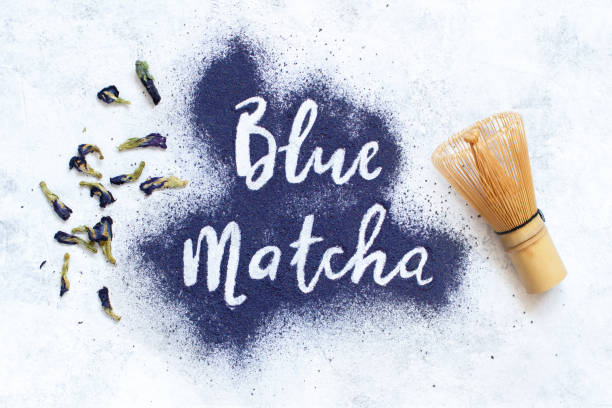Welcome to my article about “What Is Blue Matcha?”. In the dynamic realm of tea, matcha has been a preferred choice for its robust flavor, health benefits, and ceremonial importance. When one thinks of matcha traditionally, the immediate image that comes to mind is a vibrant, green powder. However, a new player is captivating the attention and taste buds of tea connoisseurs everywhere: Blue Matcha. This visually stunning tea isn’t just visually appealing; it presents a distinctive flavor profile and a range of benefits that make it a beverage worth trying.
Blue matcha is not sourced from the same plant as green matcha. The finely ground green tea leaves make the green matcha, and the dried flowers of the butterfly pea plant (Clitoria Ternatea) create the blue matcha. When mixed with hot water, blue matcha produces a vivid blue powder that makes a mesmerizingly beautiful blue tea. This shift from green to blue has piqued the curiosity of many and unlocked new possibilities in the culinary world.
The allure of blue matcha extends beyond its striking color. It is also renowned for its health advantages. The butterfly pea flower is abundant in antioxidants, which aid in combating oxidative stress in the body. Potential health benefits include enhanced skin health, improved digestion, and heightened cognitive function.
Furthermore, blue matcha is caffeine-free, making it an exceptional option for individuals sensitive to caffeine but still desiring a flavorful, nutritious beverage.
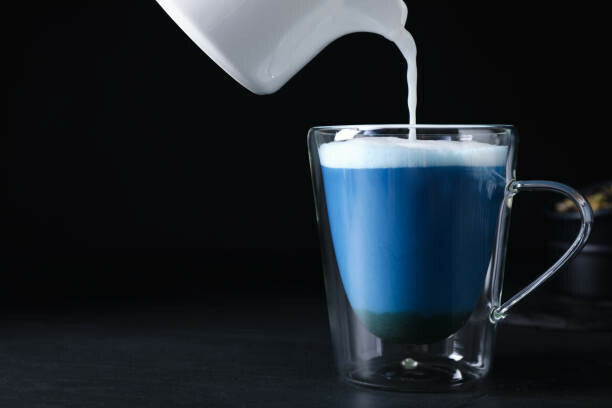
One of the reasons behind the rapid rise in popularity of blue matcha is its adaptability in the culinary domain. It can be used to prepare various beverages, including lattes, smoothies, cocktails, and mocktails. Its vibrant hue also makes it a popular choice for adding a hint of playfulness to baked goods, ice creams, and even savory dishes. The potential applications are virtually boundless, and culinary innovators are consistently discovering new methods to integrate blue matcha into their recipes.
As you delve into the realm of blue matcha, you will realize that it offers an enjoyable new flavor and color and a fresh standpoint on the potential of tea. Its surging popularity is a testimony to its unique allure and the excitement it brings to traditional tea enthusiasts and contemporary food lovers alike. Thus, whether you seek to elevate your morning ritual, experiment in the kitchen, or savor a cup of something aesthetically pleasing, blue matcha is the ideal option to explore.
Unveiling the Mystery: What Exactly Is Blue Matcha?
Blue matcha has recently made a big impression in the world of tea, grabbing attention with its beautiful color and interesting background. Unlike the traditional green matcha, blue matcha is derived from the Clitoria Ternatea plant, also called the butterfly pea flower. When mixed with hot water, this vibrant blue powder produces a visually stunning drink that is as delightful to look at as it is to drink. But what exactly is blue matcha, and how does it compare to its green counterpart?
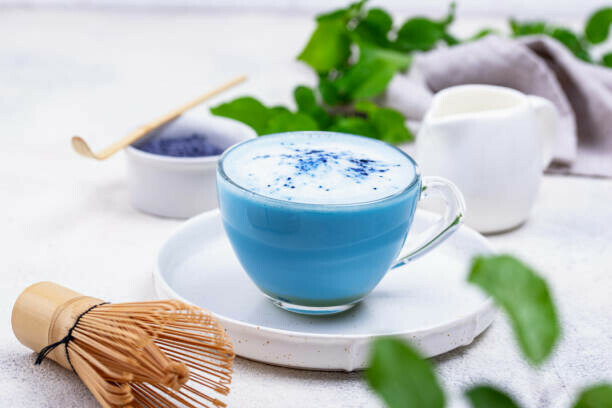
The journey of blue matcha begins in the lush landscapes where the butterfly pea flower flourishes. Originating in Southeast Asia, this plant has been used for centuries in various traditional practices, from herbal medicine to cooking. The flower petals of the butterfly pea are harvested and then dried before being finely ground into a powder. This careful process ensures that the vivid blue color and nutritional properties are maintained, resulting in a beautiful and beneficial product.
One of the most intriguing aspects of blue matcha is its nutritional composition. While green matcha is known for its high levels of catechins and antioxidants, blue matcha offers its own set of benefits. The butterfly pea flower is abundant in anthocyanins, potent antioxidants recognized for their anti-inflammatory properties and ability to support brain health. Additionally, blue matcha is packed with flavonoids, which can help enhance blood circulation and reduce oxidative stress. This unique mix of nutrients makes blue matcha a powerful superfood, providing different health benefits than green matcha.
Despite its increasing popularity, blue matcha is often surrounded by mistaken beliefs. A common misunderstanding is that blue matcha contains caffeine, similar to green matcha. However, blue matcha does not contain caffeine naturally, so it is an excellent choice for people who want to steer clear of the stimulating effects of caffeine but still want to savor a tasty and nutritious beverage. Another misconception is that blue and green matcha are interchangeable in flavor and use. Although both can be used in various recipes, blue matcha has a more earthy and slightly floral taste than green matcha’s vegetal and umami flavor profile. This distinction is crucial for culinary enthusiasts wishing to experiment with these vibrant powders in their cooking and baking endeavors.
As the fascination with blue matcha keeps growing, it is evident that this remarkable tea is more than just visually appealing. Its valuable addition to any tea enthusiast’s collection is due to its rich history, distinctive production method, and impressive nutritional advantages. Whether you are drawn to its eye-catching color, health-promoting properties, or simply its refreshing taste, blue matcha offers a new and exciting way to participate in the ancient tradition of tea drinking. So, the next time you want to try something new, think about striving for blue matcha – a tea that is as mysterious as it is captivating.
The Health Benefits of Blue Matcha
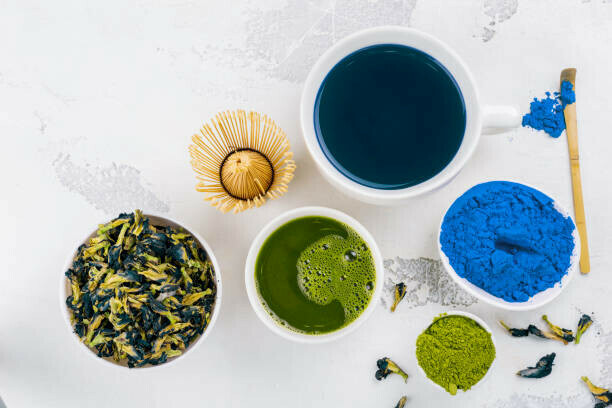
Blue matcha has recently made a big impression in the world of tea, grabbing attention with its beautiful color and interesting background. Unlike the traditional green matcha, blue matcha is derived from the Clitoria ternatea plant, also called the butterfly pea flower. When mixed with hot water, this vibrant blue powder produces a visually stunning drink that is as delightful to look at as it is to drink. But what exactly is blue matcha, and how does it compare to its green counterpart?
The journey of blue matcha begins in the lush landscapes where the butterfly pea flower flourishes. Originating in Southeast Asia, this plant has been used for centuries in various traditional practices, from herbal medicine to cooking. The flower petals of the butterfly pea are harvested and then dried before being finely ground into a powder. This careful process ensures that the vivid blue color and nutritional properties are maintained, resulting in a beautiful and beneficial product.
One of the most intriguing aspects of blue matcha is its nutritional composition. While green matcha is known for its high levels of catechins and antioxidants, blue matcha offers its own set of benefits. The butterfly pea flower is abundant in anthocyanins, potent antioxidants recognized for their anti-inflammatory properties and ability to support brain health. Additionally, blue matcha is packed with flavonoids, which can help enhance blood circulation and reduce oxidative stress. This unique mix of nutrients makes blue matcha a powerful superfood, providing different health benefits than green matcha.
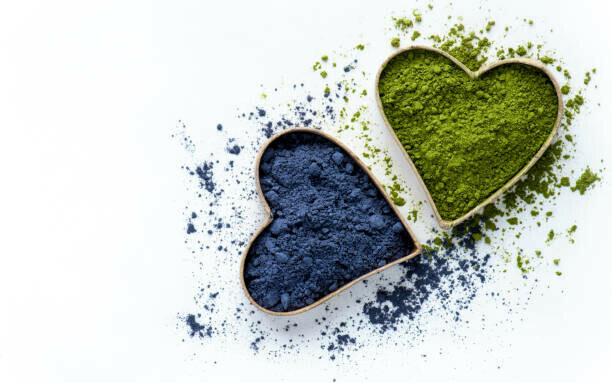
Despite its increasing popularity, blue matcha is often surrounded by mistaken beliefs. A common misunderstanding is that blue matcha contains caffeine, similar to green matcha. However, blue matcha does not contain caffeine naturally, so it is an excellent choice for people who want to steer clear of the stimulating effects of caffeine but still want to savor a tasty and nutritious beverage. Another misconception is that blue and green matcha are interchangeable in flavor and use. Although both can be used in various recipes, blue matcha has a more earthy and slightly floral taste than green matcha’s vegetal and umami flavor profile. This distinction is crucial for culinary enthusiasts wishing to experiment with these vibrant powders in their cooking and baking endeavors.
As the fascination with blue matcha keeps growing, it is evident that this remarkable tea is more than just visually appealing. Its valuable addition to any tea enthusiast’s collection is due to its rich history, distinctive production method, and impressive nutritional advantages. Whether you are drawn to its eye-catching color, health-promoting properties, or simply its refreshing taste, blue matcha offers a new and exciting way to participate in the ancient tradition of tea drinking. So, the next time you want to try something new, think about striving for blue matcha – a tea that is as mysterious as it is captivating.
Culinary Magic: Creative Ways to Use Blue Matcha
Blue matcha is transforming the culinary world with its vibrant color and distinct flavor. This colorful powder, derived from the butterfly pea flower, presents a range of creative possibilities for both sweet and savory dishes.
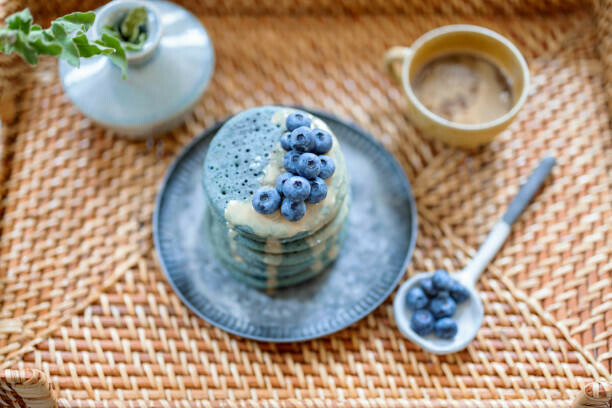
Let’s explore innovative ways to integrate blue matcha into your culinary creations, turning regular meals into extraordinary experiences.
Commencing with beverages, blue matcha is a game-changer for morning routines and mid-day refreshments. Envision a frothy blue matcha latte by combining the powder with steamed milk and a hint of honey for a visually striking and calming drink. For fans of smoothies, enhancing your favorite fruit blend with a teaspoon of blue matcha, yogurt, and almond milk boosts nutritional value and introduces an eye-catching blue swirl. It complements tropical fruits like mango and pineapple, resulting in a revitalizing and vivid smoothie bowl, perfect for aesthetically pleasing breakfast posts on Instagram.
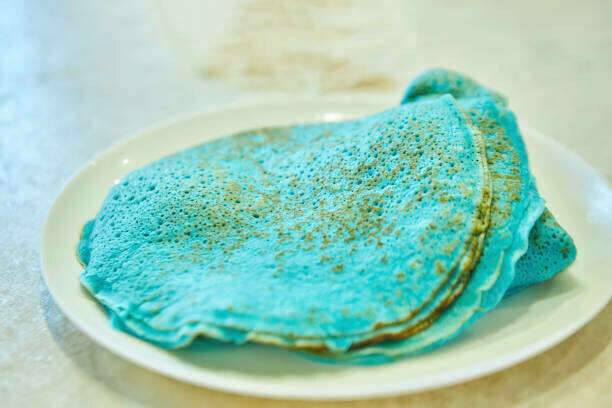
Regarding desserts, blue matcha presents countless opportunities. Use it in baking to craft captivating blue matcha cupcakes, cheesecakes, or macarons. Its subtle, earthy flavor complements sweet ingredients splendidly. For a stunning dessert, consider preparing a blue matcha panna cotta, alternating the blue matcha-infused cream with a vanilla bean base. The contrast between the blue and white layers will impress your guests. Furthermore, blue matcha can be incorporated into frostings and glazes, offering a natural and safe way to achieve striking colors in baked goods without artificial dyes.
However, the allure of blue matcha extends beyond sweets. Savory dishes can also benefit from its unique qualities. Add a dash of blue matcha to your homemade pasta dough for a colorful twist on traditional noodles. The subtle flavor won’t overpower your dish, providing a fun and creative way to elevate your pasta recipes. Blue matcha can also be used to produce vivid sauces and dressings. For instance, a blue matcha vinaigrette can lend a burst of color and an antioxidant boost to your salads.
In the culinary arts, presentation is vital, and blue matcha offers a simple way to add a visual flair to your dishes. Sprinkle a plate with blue matcha powder before plating desserts for a sophisticated look, or use it to garnish cocktail glasses for an added touch of refinement. Speaking of cocktails, blue matcha is making a splash in the mixology scene. Its vibrant color and gentle flavor make it an excellent ingredient for stunning cocktails. Mix blue matcha with gin, lemon juice, and simple syrup for a refreshing and visually appealing Blue Matcha Collins. Alternatively, blend it into a piña colada for a tropical twist, adding a new dimension to the classic cocktail.
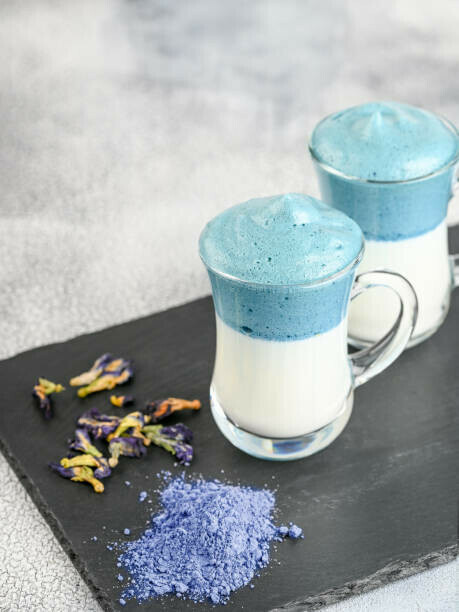
Integrating blue matcha into your culinary repertoire is a treat for the eyes and a delightful way to experiment with flavors and textures. Whether you’re preparing beautiful beverages, delectable desserts, savory dishes, or eye-catching cocktails, blue matcha adds a touch of enchantment to every creation. Embrace this culinary trend and let your creativity flow, turning each meal into a masterpiece with the captivating allure of blue matcha.
Purchasing, Storing, and Preparing Blue Matcha
Embarking on a culinary journey with blue matcha begins by ensuring you buy a genuine and top-notch product. Because of its rising fame, you must be careful when selecting your blue matcha. Seek out trustworthy vendors who offer detailed information about the source of their butterfly pea flowers. Authentic blue matcha should display a vibrant, uniform blue hue and fine, powdery consistency. Avoid products with extra substances or fillers, as these can diminish the quality and affect the flavor.
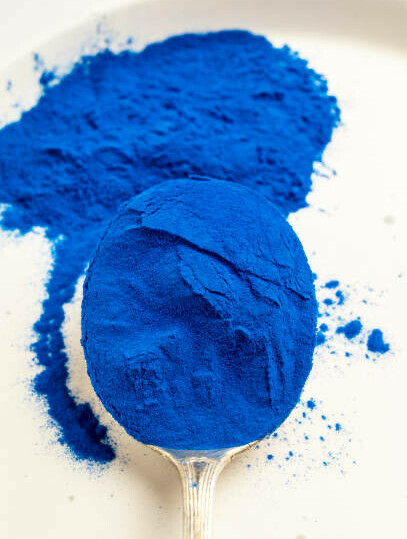
After obtaining your blue matcha, correct storage is essential to preserve its vivid color and delicate flavor. Blue matcha is sensitive to light, heat, and moisture, so storing it in a sealed container in a cool, dark place is best. Glass jars with tightly sealed lids are suitable, but keep them away from direct sunlight. For maximum freshness, consider dividing your blue matcha into smaller portions, keeping one for immediate use and the rest in a sealed container in the refrigerator. This method helps to maintain the matcha’s quality over time.
Preparing blue matcha for consumption is a straightforward yet exact process that enhances its distinct flavor. Begin by sifting the blue matcha powder to eliminate lumps, ensuring a smooth, lump-free texture. For a traditional preparation, mix one teaspoon of blue matcha with a small amount of hot water (not boiling, around 175°F or 80°C) using a bamboo whisk until a frothy layer forms. Add more water to adjust your taste, or use milk for a creamy latte. The gentle whisking mixes the powder and aerates it, unlocking its full potential of flavor and aroma.
When it comes to acquiring blue matcha, it is crucial to prioritize sustainable and ethical products. Like many agricultural products, the butterfly pea flower can be susceptible to overharvesting and unsustainable farming practices. Choose brands committed to sustainable agriculture, fair trade, and ethical labor practices. This ensures you get a top-quality product and supports the communities and environments where the butterfly pea flowers are cultivated.
Frequently asked questions about blue matcha often pertain to its shelf life, signs of expiration, and ideal consumption conditions. Typically, blue matcha has a shelf life of about six months to a year when stored properly. Indicators that your blue matcha may have expired include a faded color, a lackluster flavor, or a musty odor. To fully enjoy the benefits of blue matcha, consume it within the recommended period and ensure it’s stored in optimal conditions.
Incorporating blue matcha into your daily routine can be a delightful and healthful experience, provided you take the necessary steps to purchase, store, and prepare it correctly. By choosing authentic, top-quality blue matcha, storing it with care, and preparing it with precision, you can savor its vibrant color and unique taste to the fullest. Prioritizing sustainable and ethical sources ensures that your enjoyment of this enchanting tea supports responsible and fair agricultural practices.
Thank you for reading my article about “What Is Blue Matcha?” and I would love to receive your comments down below, in case of any.

